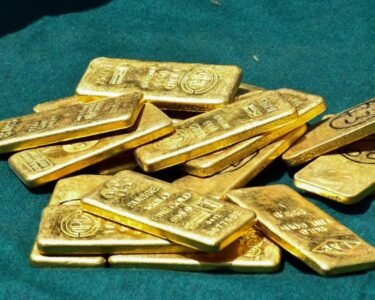The Sultanate of Oman is richly endowed with natural resources, including key metallic minerals such as copper, chromite, manganese, lead, zinc, and gold, as well as industrial minerals like limestone, marble, dolomite, gypsum, laterite, silica, salt, and quartzite. These substantial mineral deposits offer significant opportunities for exploration, commercialisation, and value-added processing. Oman also hosts several aluminium manufacturing companies, including the globally renowned Sohar Aluminium, which has helped place the country on the global map in non-ferrous metal manufacturing.
However, one of the major challenges facing miners, producers, and traders is managing the inherent price volatility of metals and minerals. Prices of these commodities are largely influenced by international market dynamics—ranging from global demand-supply imbalances to geopolitical developments, currency fluctuations, and broader economic cycles. In such an unpredictable environment, merely focusing on production and sales is no longer sufficient to ensure financial stability or protect profit margins.
To address these uncertainties, hedging has emerged as a powerful and essential tool in the risk management arsenal of businesses operating in the commodities space. Hedging allows companies to lock in prices for future transactions, thereby reducing exposure to price fluctuations and providing a greater degree of certainty for planning and budgeting purposes. The London Metal Exchange (LME) plays a vital role in this ecosystem by offering a platform for hedging non-ferrous metals such as aluminum, copper, tin, nickel, zinc, and lead. Oman based producers who export or import these commodities can directly benefit from this established global framework.
When a miner or manufacturer decides to hedge, it is akin to taking out an insurance policy against adverse price movements. Although hedging does not prevent price volatility, it significantly cushions the financial impact of such volatility. This enables businesses to focus on operational efficiency and long-term strategy without being derailed by short-term market fluctuations.
Hedging in the commodities market typically involves the use of derivative instruments such as forward contracts, futures, options, and swaps. These instruments allow parties to agree on prices today for transactions that will take place in the future, thereby limiting their risk exposure.
A forward contract is an agreement between two parties to buy or sell a specific quantity of metal at a predetermined price on a future date. This arrangement is particularly useful for miners and traders looking to secure revenues by locking in sales prices that align with their budgeting and profitability targets. Being customised, forwards are flexible but come with counterparty risk.
Futures contracts, on the other hand, are standardised agreements traded on exchanges. They are similar to forwards in function but differ in structure. Because they are exchange-traded, futures offer enhanced transparency, liquidity, and reduced counterparty risk. They are ideal for businesses seeking regulatory oversight and ease of exit or rollover.
Options contracts add another layer of flexibility. An options contract grants the buyer the right—but not the obligation—to buy or sell an asset at a specified price within a defined timeframe. A call option gives the right to buy, while a put option gives the right to sell. In both cases, the buyer pays a premium to the seller for this privilege. Options are particularly valuable for companies that want to protect themselves against downside risk while still retaining the potential to benefit from upward price movements.
Swaps are another important financial instrument used in hedging. In a typical commodity price swap, one party agrees to pay a fixed price over a given period, while the counterparty pays a floating market price. If market prices rise above the fixed rate, the hedger benefits from cash compensation; if prices fall, they make up the difference. These contracts are often arranged through financial institutions and help businesses stabilise cash flows and revenues across fluctuating markets.
In Oman’s context, the use of such instruments is steadily gaining ground as companies in the mining and metals sector become more financially sophisticated. As Oman continues to diversify its economy and strengthen its position in global supply chains, robust price risk management strategies will become increasingly vital. Hedging is not merely a financial technique—it is a strategic necessity for ensuring resilience and sustainability in the face of global commodity market volatility.
2022 © All right reserved for Oman Establishment for Press, Publication and Advertising (OEPPA) Provided by SyndiGate Media Inc. (Syndigate.info).




